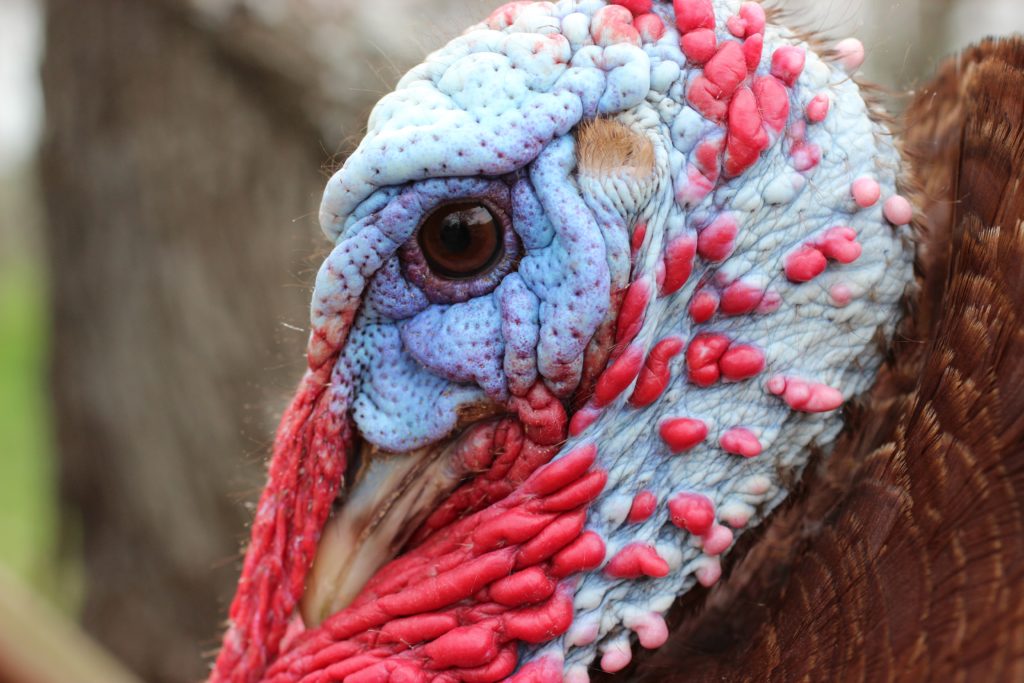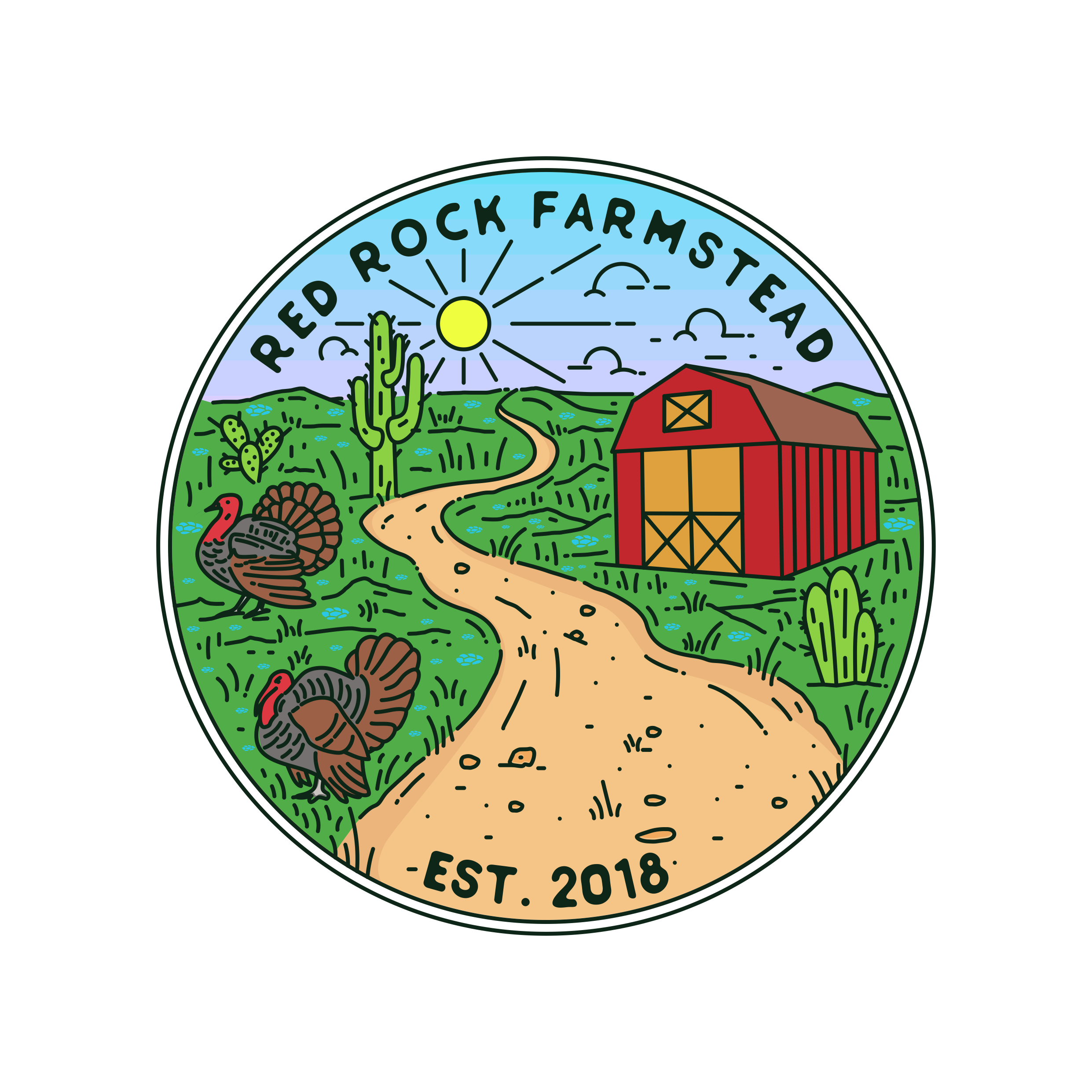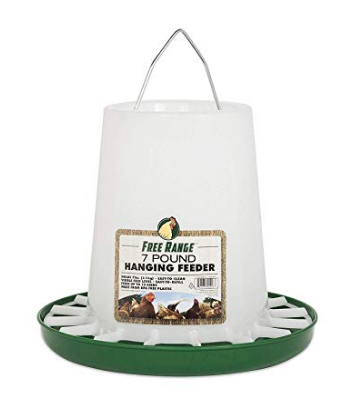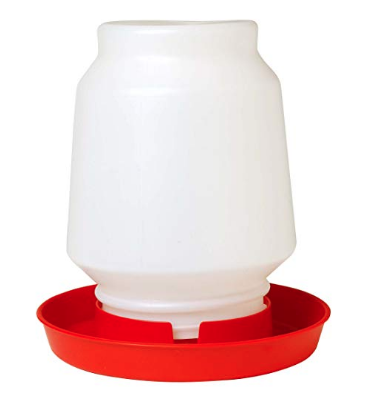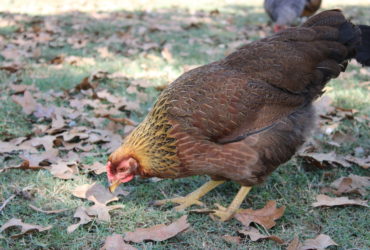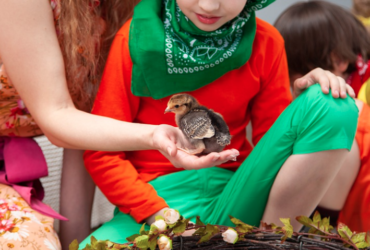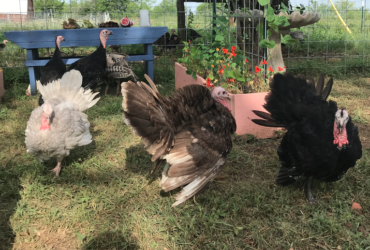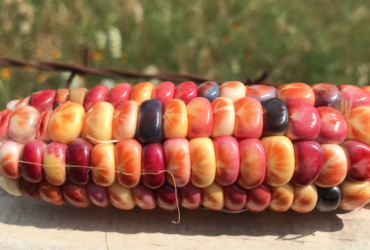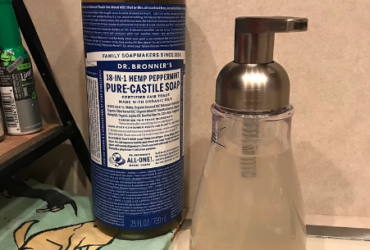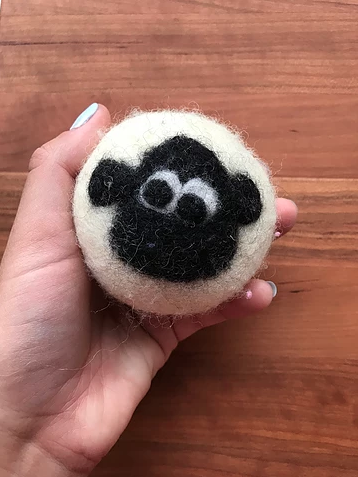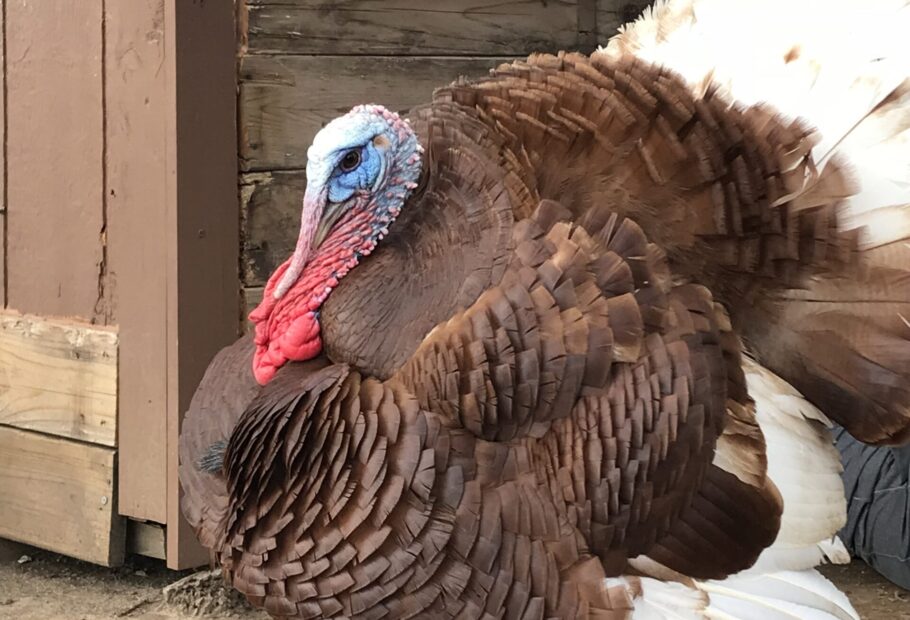
Tips + Tricks
How to Raise Heritage Turkeys
As an Amazon Associate I earn from qualifying purchases.
Introduction
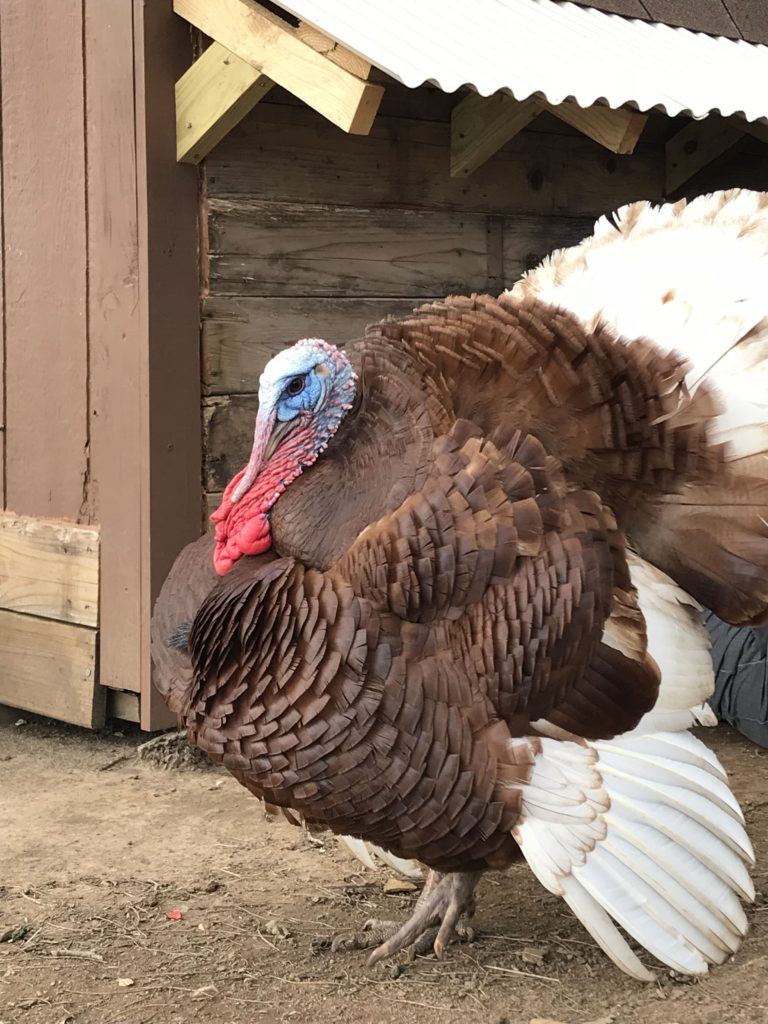
So you’ve stumbled onto this post because you’re curious about how to raise your very own heritage turkeys, welcome!
Heritage turkeys have been my absolute favorite part of homesteading and farming. They’re regal yet goofy, dynamic, challenging, curious and so much more (including tasty). While there are thousands of articles out there dedicated to the “gateway drug” of farm animals (aka chickens) turkeys don’t get as much attention.
Due to popular demand, I’ve decided to compile my own manual of tips and tricks on how to raise heritage turkeys! This will be full of my own experiences and observations. Farming isn’t one size fits all, so maybe you’ve had a different experience, and that is fantastic! Be sure to share any further tips and lessons you’ve learned in the comments for others to read.
Important Resources
Asking fellow farmers or poultry enthusiasts for advice is a great way to learn more about raising turkeys. I’ve also found that having a few solid reference books to rely on for answers can help settle the wishy-washy Google answers you might stumble upon. When I’m feeling overwhelmed by conflicting information, I like to go back to a single source of proven information to make my decisions.
One of the best resources I can recommend for new turkey owners is the Heritage Turkey Manual from The Livestock Conservancy website (it’s free!).
There are also two books I recommend that have proven invaluable in my time raising turkeys:
Storey’s Guide to Raising Turkeys by Don Schrider & The Chicken Health Handbook by Gail Damerow


Although the handbook says its for chickens, most of the ailments described in the book can be applied to turkeys as well. I love the straight forward approach in Damerow’s health handbook that puts hours of frantic Google searching to rest.
General Heritage Turkey Info
The first thing you’ll notice with heritage turkeys is the huge personality difference from chickens. Turkey poults are calm, observant, and curious. As adults, they will follow you around and offer to “help” with your outdoor chores by pecking at your clothes and hands.
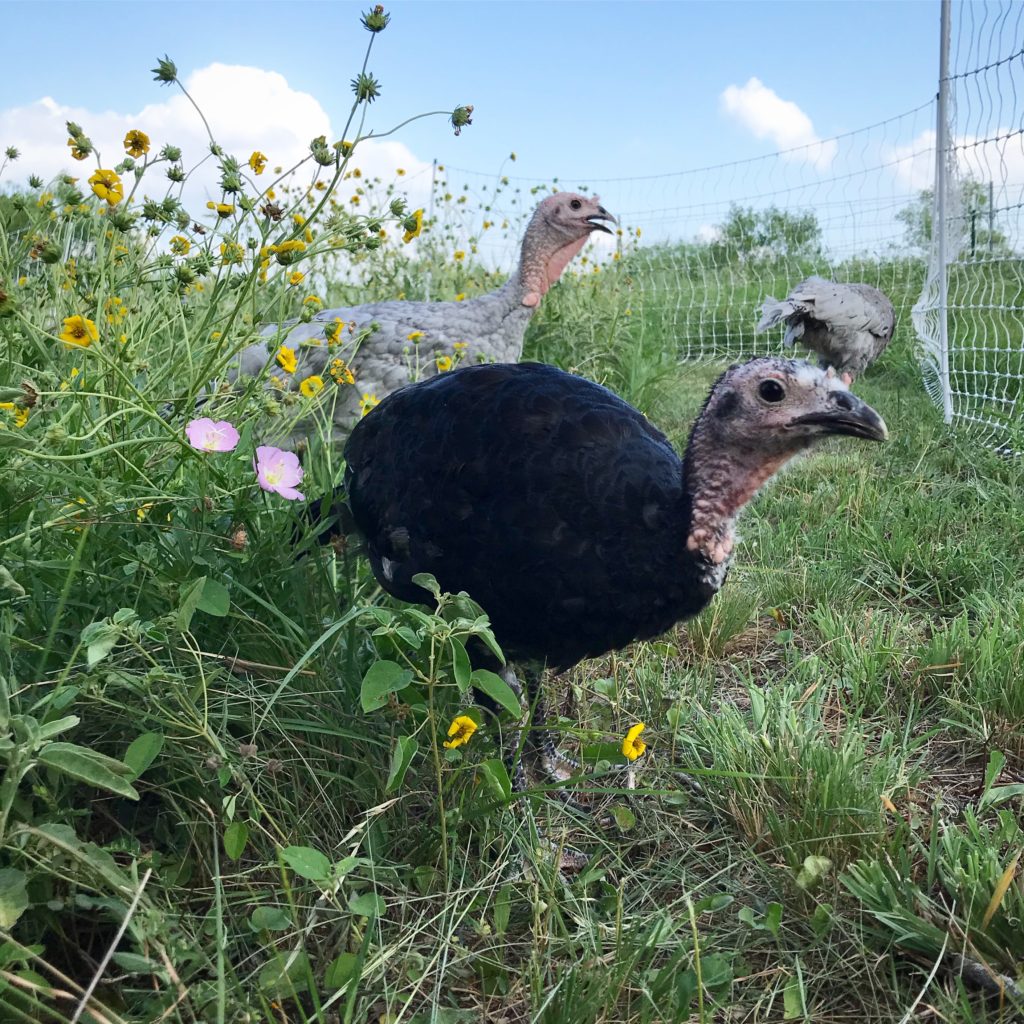
Heritage turkeys act much like wild turkeys. They’re lightweight enough to fly fairly well and will want to roost high in the trees.
I haven’t had to clip anyone’s wings, but turkeys love to roam and explore. If you are planning on free-ranging your turkeys, you might want to let any close neighbors know that their house might be a future turkey roosting zone. Turkeys can also be quite noisy between the toms gobbling and the hens “barking”.
Varieties
Heritage turkeys were bred from wild turkeys in North and South America centuries ago. Since then, different cultures have bred them into distinct colors, or varieties, all of which can interbreed and create all sorts of fun hybrid colors. Heritage turkeys, like the ones our ancestors ate, were then further bred selectively into the commercial turkeys we see on the grocery store shelves today.
Some of the most commonly recognized heritage varieties are:
- Blue Slate
- Black Spanish
- Bourbon Red
- Royal Palm
- Narragansett
At Red Rock Farmstead, we prefer to raise heritage turkeys because they live a long productive life of 5-7 years, can breed naturally, and have better disease resistance when compared to broad breasted breeds.
When you choose to raise a heritage breed, you are choosing to help revive the history and genetics surrounding that animal! Neat!
Behavior
I’ve never had a turkey act aggressive towards me. They are quite docile. My turkeys know me as the food and treat lady. Our dog, however, has had several feuds with our tom turkeys. I think it’s a boy thing. Our dog isn’t bothered by the roosters but for some reason the male turkeys really anger him. I think it would be quite rare for a turkey to become violent with a person. I’ve seen way more angry roosters than turkeys.
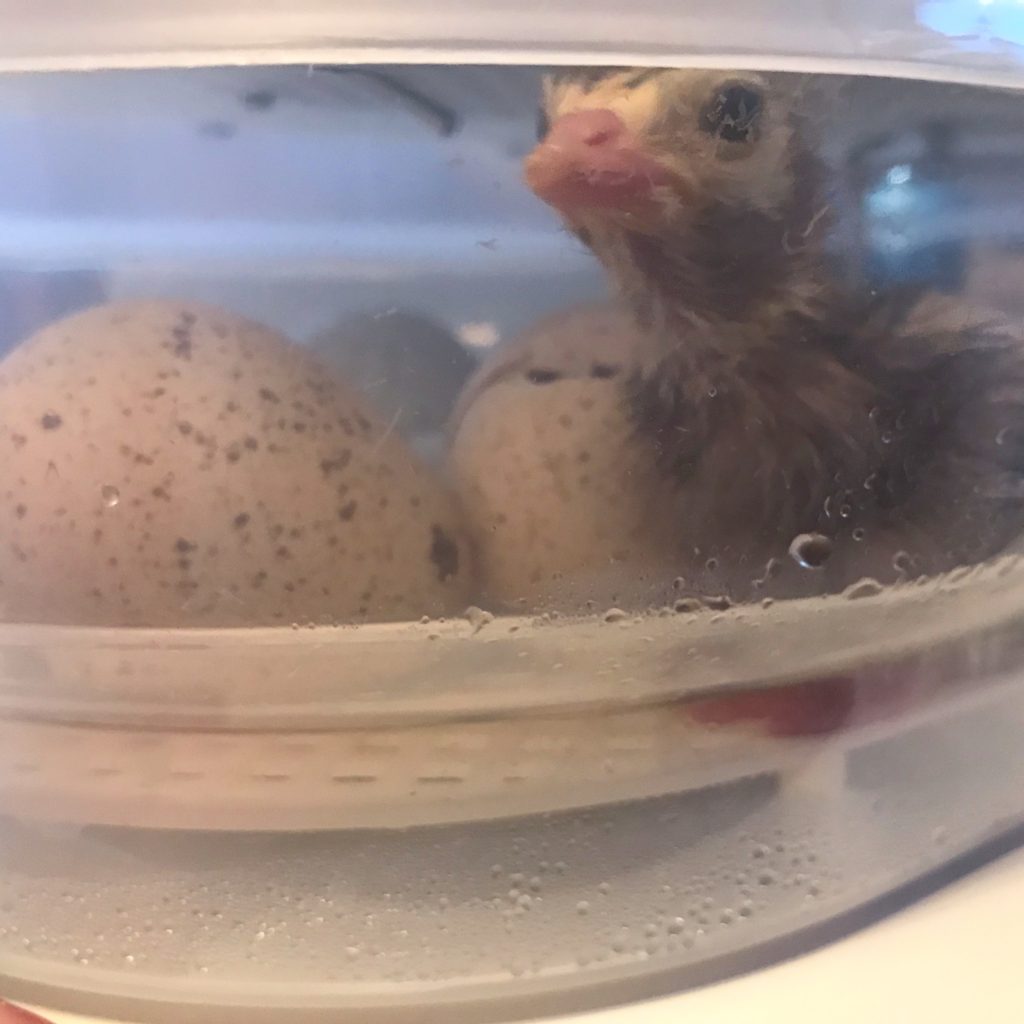
The fun part of heritage turkeys, over broad breasted varieties, is that the hens will go broody and hatch their own eggs! I’ve heard of some farmers being able to hatch broad breasted/heritage hybrids, but most pure broad breasted turkeys cannot reproduce naturally. Heritage turkeys can mate naturally and will lay a few clutches of eggs per season. You can let a broody hen hatch them in a safe spot on her own, or you can collect them and incubate them yourself.
Turkey Poults
There are several places to obtain heritage turkey poults. There are hatcheries that allow you to order day-old poults through the mail. Depending on where you are located in relation to the hatchery, they typically will arrive after 1-3 days in transit. Hatchery poults may not be the highest quality birds in regards to conforming to the APA (American Poultry Association) standards, but they will at least give you experience in raising turkeys. You can always buy higher priced stock from a breeder later on if you decide you want to breed and hatch your own!
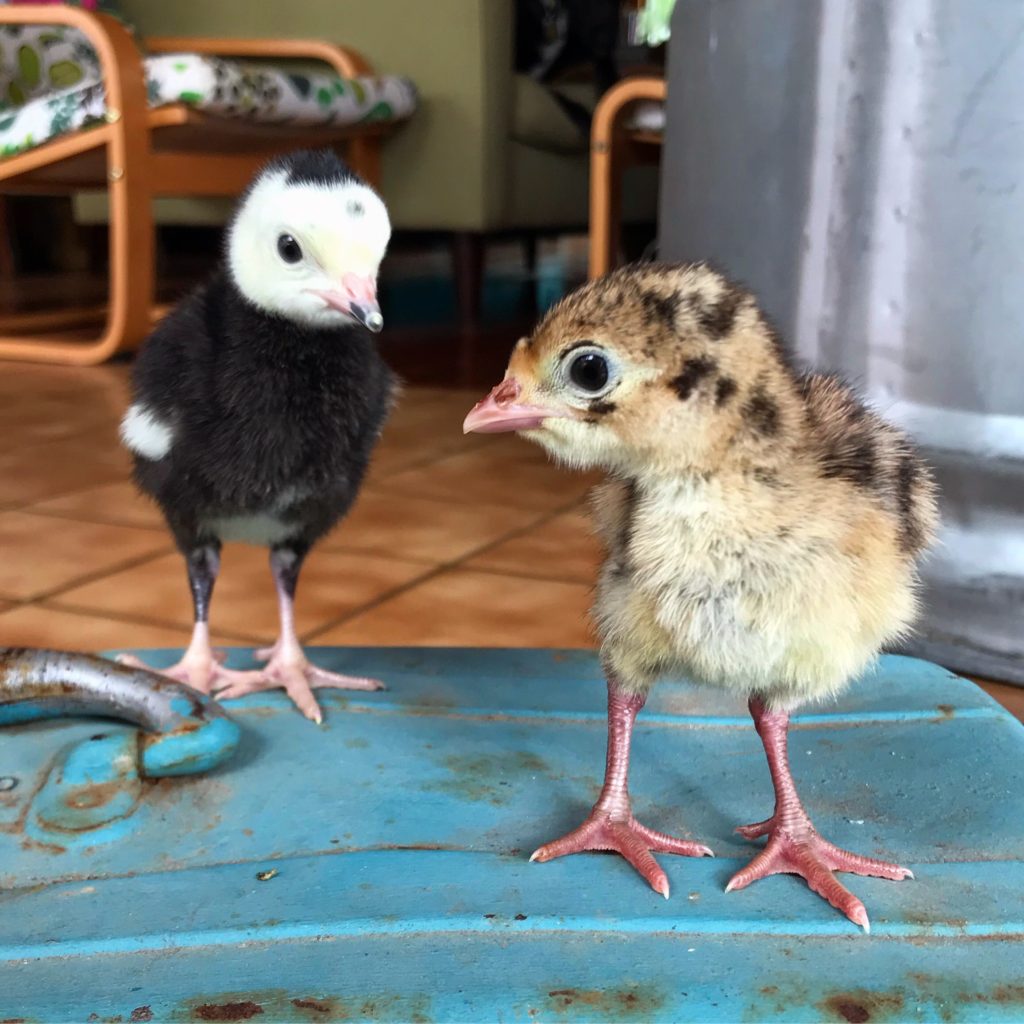
I would not put a ton of trust in Craigslist or poultry swaps for quality, healthy poultry. You never know what illnesses these birds have been exposed to. Illnesses like Mycoplasma gallisepticum and Mycoplasma synoviae can be very detrimental to turkeys but mild in chickens.
I know it’s not very fun to think you cannot participate in poultry swaps and spur of the moment turkey purchases, but the future health of your flock will thank you for your self control!!!
Read up on poultry biosecurity if you are not familiar with good biosecurity practices. And if you do decide to buy poultry from an unknown source, quarantine the birds away from your existing flock for at least 30 days.
Raising turkey poults is very similar to raising chicken chicks. You will need essentially the same set up:
- An enclosure/bin to keep them in
- Heating element (lamp or plate like the Brinsea EcoGlow)
- Bedding (I use pine shavings)
- Feeder/waterer
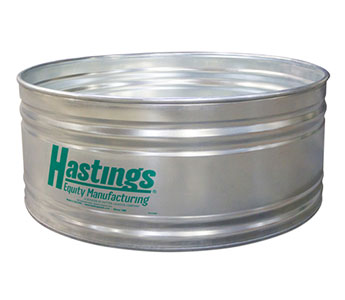
Set up your poults’ brooder a day in advance to give the enclosure time to warm up and so you can monitor the temperature and adjust as needed. I tape a cheap thermometer to the inside wall of my brooder so I can keep an eye on the approximate temperature.
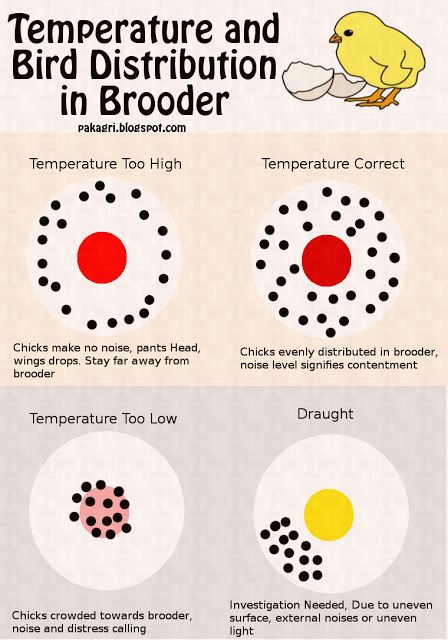
If you don’t have a thermometer, thankfully your poults will tell you if it’s too hot or too cold in their brooder. If they are all huddled under the heat lamp, it may be too cold. If they are spread out around the edges and are panting or have their wings spread out, it is too hot.
I keep the “hot zone” (under the lamp) for my turkey poults at 95°F for their first week, then I start raising the heat lamp to drop the temperature by 5 degrees each week thereafter. I really like the Brinsea EcoGlow as a heating element, too. This is an alternative to the standard red heating lamps, it is also less of a fire hazard if you are a nervous poult mom like I am. It is a little more expensive, but if you are raising small quantities of birds it does a great job of mimicking a real mama bird and her belly warmth!

If you are using a standard heat lamp, don’t keep the entire brooder at the hottest temperature. I’ve found my baby poultry to be happiest when there is a warm zone under their heating element and cooler areas near their food and water.
Food & Water for Poults
Turkey poults need to be started on a higher protein feed than chickens do. 28% protein feed is ideal for baby turkeys. The feed will sometimes be labeled as a gamebird starter if you are having trouble finding it. If you cannot find 28% at your local feed store, try to find the highest protein you can or special order it.
You can use any standard feeder for your poults. They don’t need any special type of feeder or waterer. The poults, however, benefit from you showing them how to eat and drink when you first receive them.
I like to tap my finger in the food to show them where it is and encourage them to start pecking. Do the same for the water. You can also gently pick up each poult and dip its beak into the water. Don’t put water in anything that allows the poult to enter and get wet or drown.
This feeder and waterer are great options for raising turkey poults. The smaller feeders you commonly see at feed stores waste a lot of feed, and with hungry, growing turkeys you will need to be refilling them often. I also like the larger, 1 gallon capacity of the red waterer.
Poult Troubleshooting
A lot of people will tell you turkey poults are more difficult to raise than chicks. I haven’t really found this to be the case. They are certainly different in their personalities and have slightly different care requirements, but I don’t find them to be any more difficult.
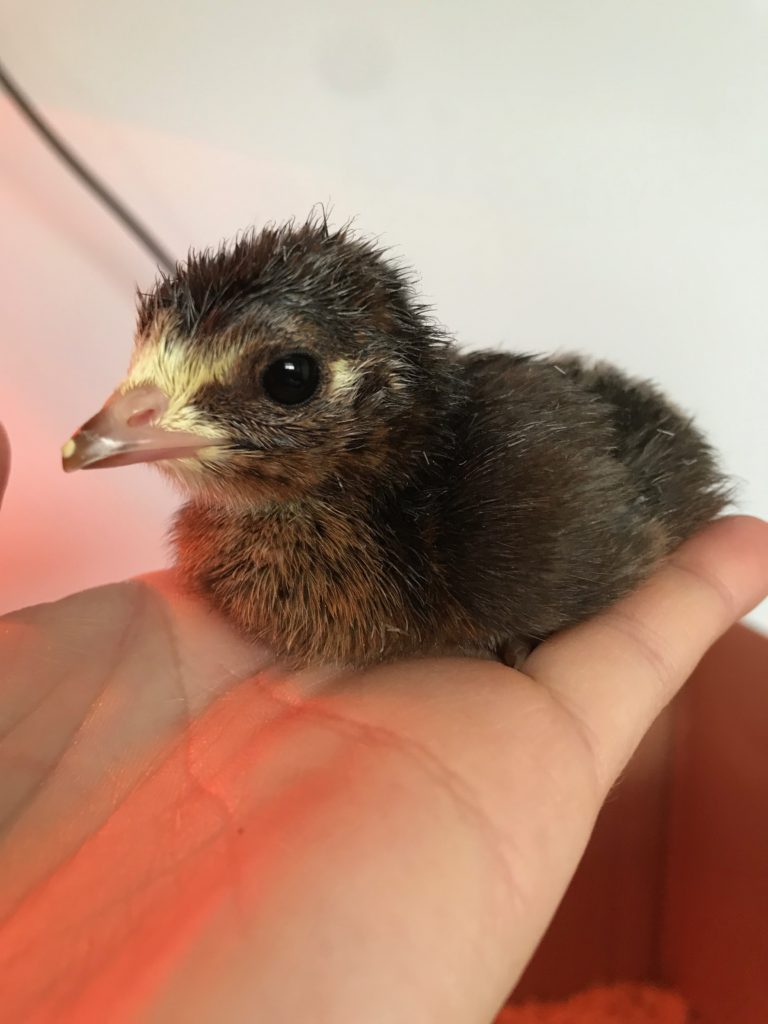
The biggest issue I had with raising turkey poults this past spring was coccidiosis. This is also one of our biggest issues when raising other baby poultry, so I didn’t find the turkeys to be any more susceptible.
I’ve tried to raise our birds without medicated feed, but unfortunately these birds succumb to cocci one way or another. I’ve found keeping baby poultry medicated with a preventitive dose of amprolium is the best way, along with maintaining a very clean brooder, to help them build up their immune systems. I’m not able to source a high protein feed that is also medicated, so I add a small dose of liquid Corid (amprolium) to their water to keep the cocci levels down.
Corid Dosage
*Please consult a veterinarian beginning any medical treatments. This is the method that helped me control coccidiosis in my flock, but without proper diagnosis you might be treating the wrong illness. Most vets will accept fecal samples and for a small fee can perform an analysis to determine what worms or protozoa are harming your birds.
Mild outbreak or preventative dose: 5ml (~1tsp) liquid 9.6% Corid solution / gallon of water
Severe outbreak: 9.5ml (~2tsp) liquid 9.6% Corid solution / gallon of water
Even with regular preventative dosing of Corid we still ended up losing 30% of our turkey poults. This was a little higher than expected but still in the realm of normal loss. I blame Texas and our mild winters that don’t kill any nasties in the ground!!! Once we hatch eggs from the strongest individuals who survived this year, I’m hoping the resulting poults will have better immune systems adjusted to our land.
Unfortunately the poults that did start showing signs of coccidiosis went downhill very quickly. I’ve found it incredibly difficult to bring a turkey poult back from illness. Once they refuse to eat or drink it’s rare they will rebound.
The Teenage Phase & Introducing to the Existing Flock
When your cute little baby angels have turned into gangly mini-turkeys, you will start thinking about moving them outside to their permanent home and/or introducing them to your existing flock.
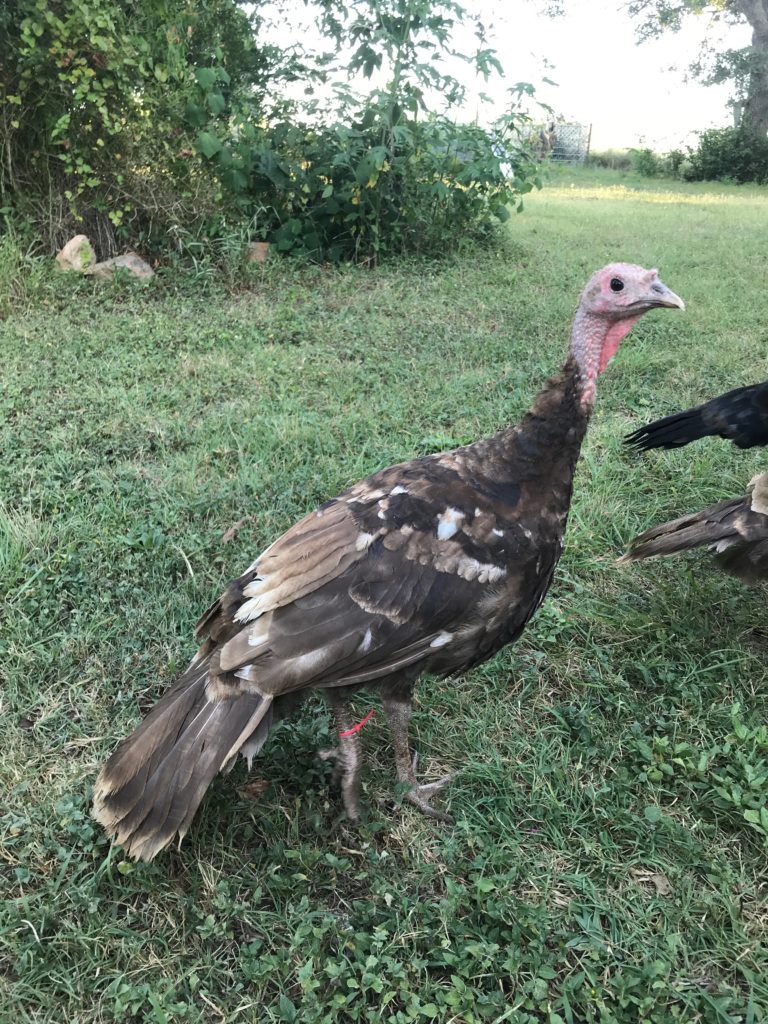
In a small homestead environment, it is ok to keep turkeys and chickens or other livestock together as long as you are practicing good biosecurity and understand the risks.
It is important to note that chickens and waterfowl can carry diseases that impact turkeys. For example, ducks can carry avian influenza which is very dangerous and contagious to chickens and turkeys. Chickens can carry Histomonas meleagridis which causes the turkey disease Blackhead. It is a rare disease, but being aware of the diseases that can be passed from poultry species to species is important.
It’s possible your turkeys, mostly toms, may show aggression towards chickens or ducks. But introducing them before they start going through “turkey puberty” (4-6 months old) will help with a smooth transition. When the turkeys are about chicken sized (2-3 months) old it is a good time to start introducing them to your existing flock (if you are going to keep them with chickens).
The most effective method of introducing new poultry to an existing flock is to keep the newbies enclosed but near the existing flock. Use a puppy pen or a separate small fenced area to slowly introduce the new turkeys to your other birds. After a week of being able to interact through the fence you can let the turkeys out to greet the chickens. There may be some small scuffles as the pecking order is established, but the chickens will soon realize the turkeys are not a threat.
Housing Your Turkeys
Turkeys love to free range, but many people will raise them in moveable turkey tractors. This allows them to be moved onto new grass every few days. You can also keep them in moveable electric netting. Where we live, they need to be locked up at night or else they get eaten. Currently, I allow the turkeys to free range, but they get herded into a coop with a roost at night for safe keeping.
They can be housed similarly to chickens, except that they are larger and will need more space. Their roosting arrangement is also unique.
You might notice that your turkeys will want to start roosting in trees or on the top of your coop. This is just normal turkey fare, but it can be really frustrating if you live in an area where they need to be locked up at night due to predators or weather.
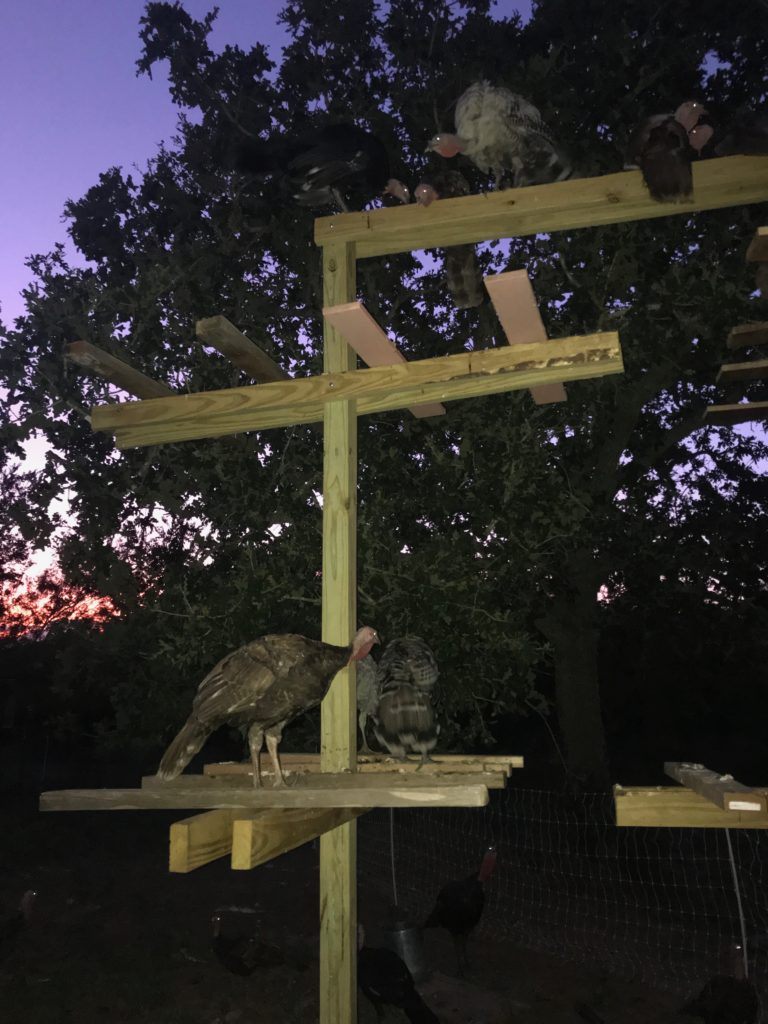
The two tips I have for troublesome turkey roosting would be:
- Build them a roost they will actually like to use.
- Herd them in at night before the sun starts setting.
Turkeys naturally want to roost high off the ground, so if you can provide them with custom turkey roosts higher than a normal chicken roost, they will be more likely to use them. And although it sounds like a pain, the only way we can consistently get our turkeys to sleep inside is to give them their feed and water before sunset every day inside their coop. This entices them to go in the coop without much wrangling, and they become accustomed to a routine where they go inside & get dinner.
Feeding the Tweens
After your poults are fully feathered and out of the baby stage, they can be fed a lower protein feed. 22-20% protein is sufficient for growing heritage turkeys until they are mature.
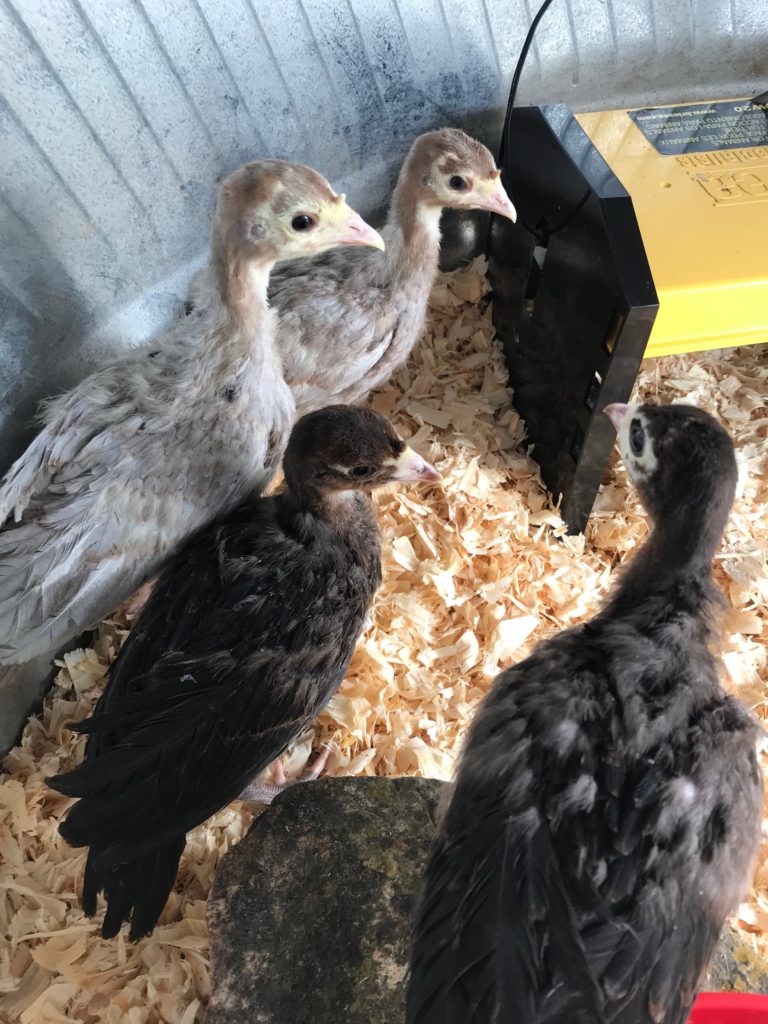
Turkeys love to hunt bugs like grasshoppers, grubs, beetles and worms. They’ll also shred the tops of grass and plants. They’ll happily eat your entire herb garden if you turn your back! Feel free to feed them garden scraps. They can be picky at first, but once they realize the strange items you’ve given them are food, they’ll warm up to the idea.
If your turkeys aren’t outside at this point, be sure to provide them with grit so that they can digest the treats you give them. Like chickens, turkeys use sand and stones in their gizzard to grind up food.

Adult Turkeys – Maturing, Mating, and Processing
Before you know it, your turkeys will be full grown. The toms will start to strut like it’s their full time job, and the hens will begin laying eggs.
If you are in a climate that has cold winters, it’s common for your spring turkey hens to wait until the following spring to start laying. Here in Texas, I’ve had hens wait until early spring, but I’ve also had them start laying in fall if they were hatched early enough and the weather is warm.
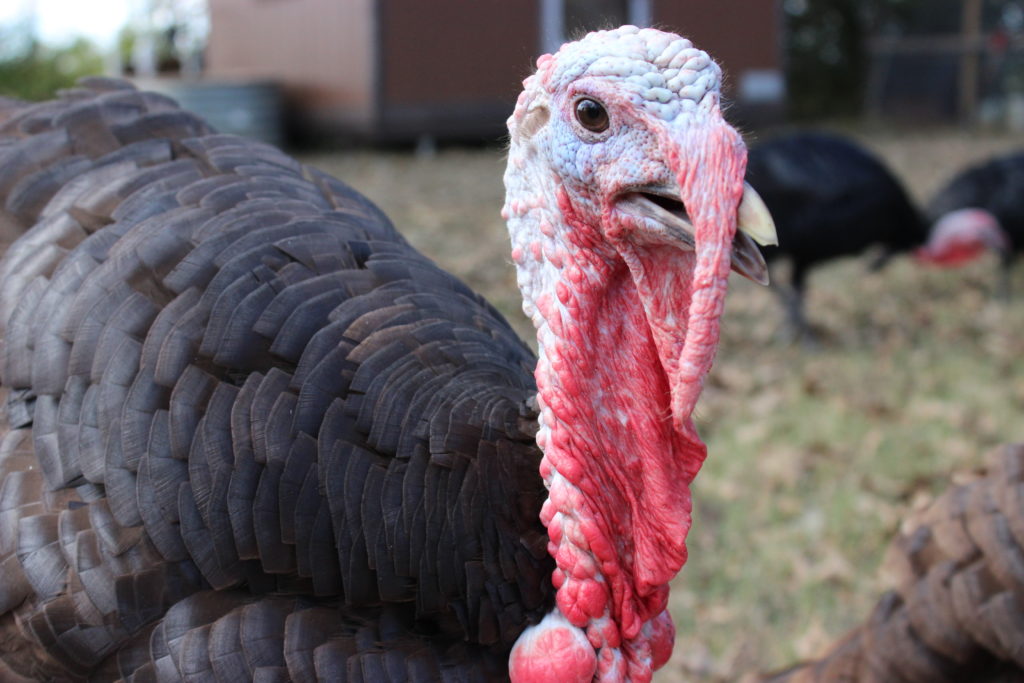
You will start to see the turkey mating ritual unfold when the hens are almost fully mature. The tom will circle and strut around his prospective turkey girlfriend, enticing her to squat for him. She will sit on the ground and the tom will stand on her back in an attempt to get his balance and position himself for the grand finale. Then, the hen will lift her tail and the tom will press his tail down and their cloacas will touch.
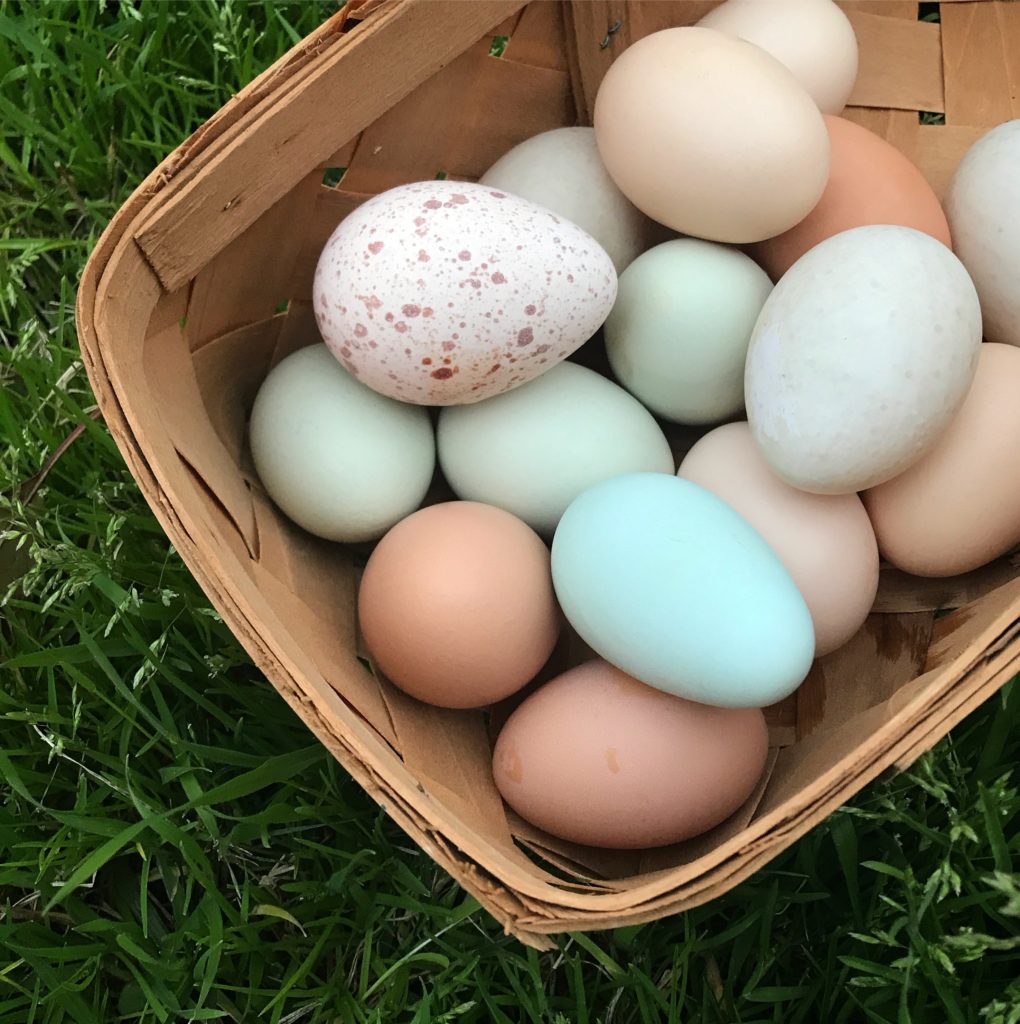
If you want a turkey hen to lay her eggs in a designated location, provide her with a large nesting box. You can build one out of wood or repurpose a large plastic tub with a door cut out. If you are observant, you will be able to tell once a turkey hen is about to start laying. She may appear restless and may be frequenting certain areas to find a good nest location.
Placing a few decoy eggs in the turkey nesting box is an easy way to encourage your turkey hen to lay where you want her to. No guarantees that she will though! If you place the nesting box in an area she is comfortable with and often frequents, chances are you might be able to convince her to use the nest. If all else fails and she attempts to lay in unwanted areas, you might want to lock her up in a secure location so you can ensure she won’t wander off looking for a good spot.
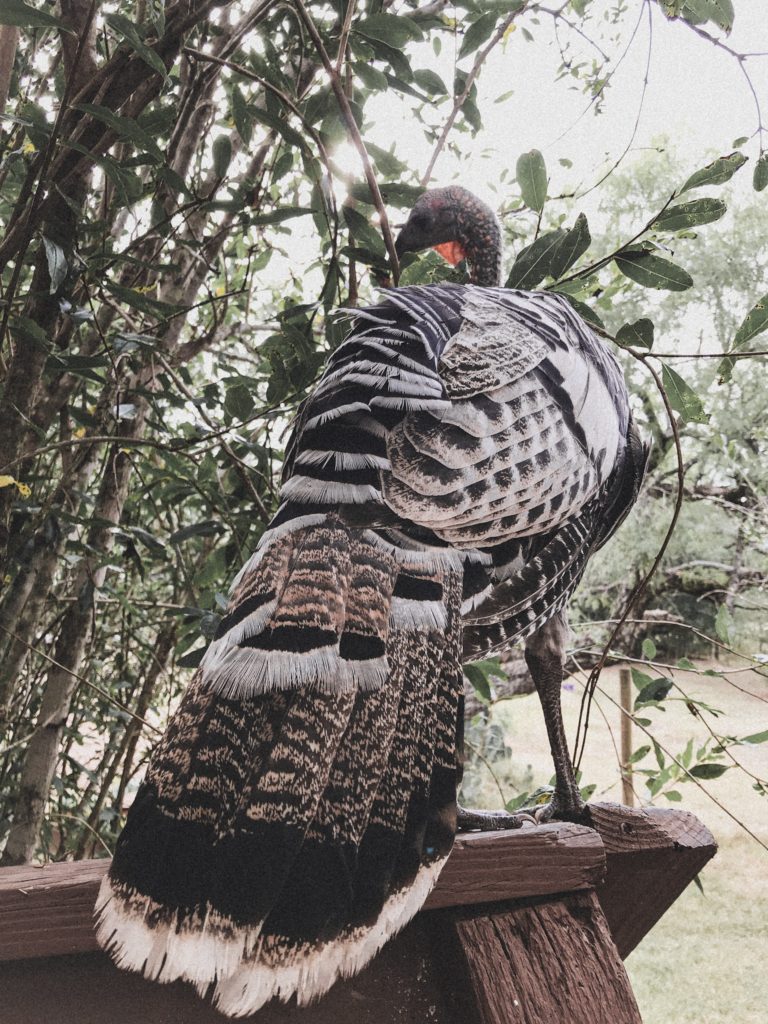
Heritage turkeys take twice as long to grow to market weight when compared to broad breasted turkeys. Farmers usually send heritage turkeys to slaughter at around 28 weeks of age. Your turkeys will develop a sound skeletal system, and once they are full grown, they will start packing on muscle. You can process both toms and hens, depending on what is right for your farm & your customers. Hens will be smaller and ideal for customers wanting smaller birds. You can expect a hen to be around 8-12 lbs and toms 12-18 lbs at around 28 weeks of age.
You can expect your heritage turkeys to have smaller breast muscles and less fatty skin. Some compare the taste more to a wild turkey and that they have more red meat.
Whether you feed your turkeys grain or let them free range 24/7 and supplement with feed, they will be delicious either way. And if you decide they will be companions instead of the main course, that is ok in my book! Turkeys make wonderful and interesting pets to have around the farm. They are always a conversation starter. While they might not be ideal for very small properties, on just a couple of acres turkeys can thrive and help you earn a small profit for your homestead. Not to mention hours of entertainment and pounds of manure for your garden! 😉
